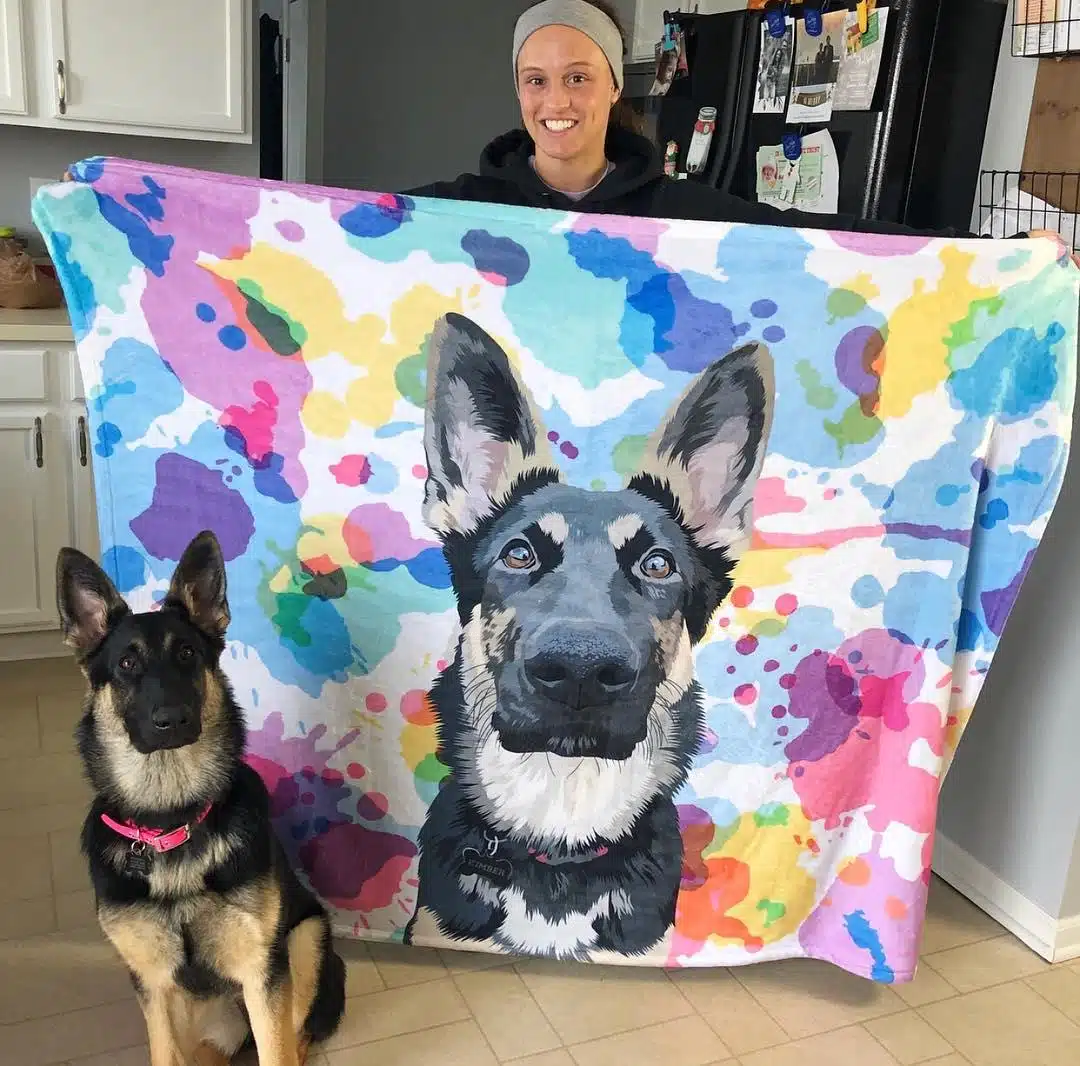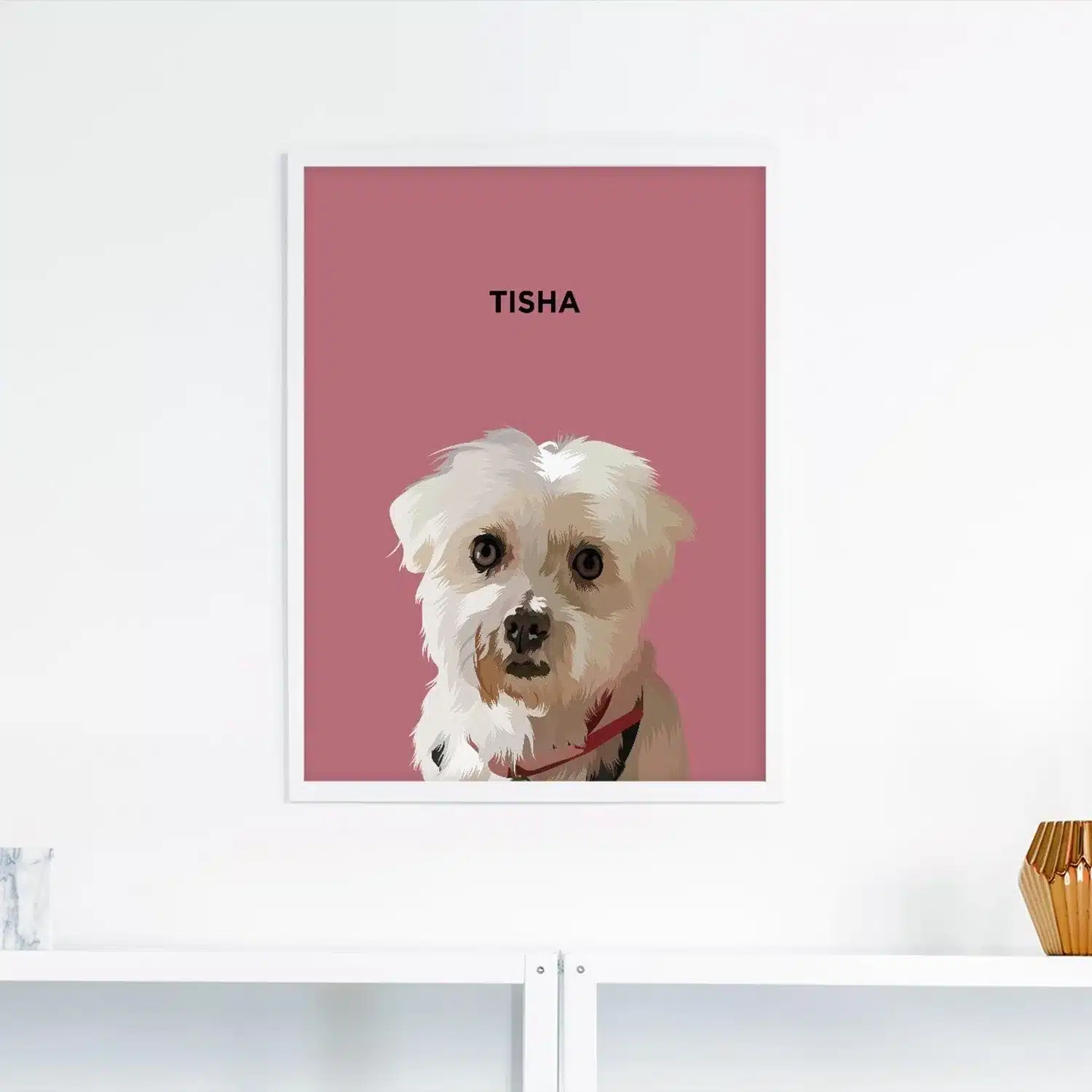Yes! Dogs Can Suffer From A Mental Health Illness!
You may have seen online or on television stories of military dogs coming home with PTSD, triggered by loud noises that remind them of bombs or gunshots. Although it is a form of mental illness in dogs, military dogs aren’t the only ones potentially affected. Anxiety can come from countless different reasons; your pup may have taken a fall as a youngster and is now afraid of heights ; he may have almost gotten run over and is now terrified when he sees traffic on the street.
Just like humans, dogs are not immune to mental illnesses, from PTSD to anxiety, dogs can suffer very similar symptoms as humans. As a dog owner, always be on the lookout for these signs as they can come at any moment, from triggers you might not even know exist.
Solutions and options can then be found to assist your dog in navigating his anxious tendencies.
Shivering
This is one of the clearest visual signs that you can look for in your dog. It could be a result of:
- Being uncomfortable with their environment
- Your dog being hyperactive
- Eerie sounds in the house like the A/C
Shivering can come from being scared, but it can also come from being too excited. Don’t be fooled, excitement is a form of anxiety and should be treated if symptoms persist. Obviously, we all prefer to have a happy dog! But having a dog that doesn’t know how to control his excitement and might put himself and others in potential danger is something that he may require help control.
Self-harm
When you think about self-harm, it is difficult to imagine a dog taking a blade and cutting themselves, but self-harm in dogs shows in different ways and can be just as dangerous, especially since those actions are most of the time done unconsciously. Actions of self-harm in dogs can include:
- Licking a part of their body over and over again
- Bite/gnaw at a body part
- Scratch a part of their skin
These actions typically result in:
- Drawing of blood
- Removing excessive fur
- Creating a raw patch of skin
Scratching, biting or licking are normal behaviors for any dog, what is abnormal is the frequency at which they exhibit these behaviors. If you notice your dog exhibiting these behaviors at a rate that endangers their skin, their body, it is time to act on it.
Scared of Loud Noises
To be fair, sudden loud noises usually catch everyone off guard and will make you jump out of your socks for a second, but this is still something you should seriously consider when diagnosing your dog. It’s not a matter of the initial reaction of the noise, but how they react afterward:
- Shivering
- Whining
- Self-harm
- Hiding
It is reasonable to predict your dog getting spooked for a second or two following the sound of nearby fireworks, or if you pop a balloon in front of them. Afterall, wouldn’t you? What is important to keep an eye out for is the behaviors that come out of these sudden noises.
If your dog starts exhibiting signs of shivering, whining or even self-harm long after the noise has past and they don’t seem to be able to overcome that fear, they might be suffering from anxiety behavior, and it is vital to find out which triggers cause this manic behavior and how they can overcome it.
Triggers can be:
- Vacuums
- Blenders
- Sirens
- Fire alarms
- Doors shutting
- Fireworks
Furthermore, perceive how your dog responds for the remainder of the day. In the event that it changes their mind-set for a more drawn out timeframe, then you need to consider different steps to take to help assist your pet feel safer in their home/environment.
Eye Contact
It’s also important to identify more subtle symptoms. Just like humans, dogs demonstrate different indicators that point to a poor wellbeing. Some dogs can suffer from massive anxiety but only show it in a subtle manner. If you find that your dog doesn’t like looking at you in the eye, or will do anything to avoid eye contact, then your dog is most likely suffering from anxiety. If when you look at them, they tend to:
- Walk or jog away
- Turn their heads away from you
- Immediately distance themselves
Then you can confirm that they are suffering from anxiety. Fortunately, this is an easier symptom to test, but as a dog owner, it is imperative to pay attention in order to notice these symptoms and start thinking of them.
Rescued dogs coming from bad environments can exhibit this behavior of “fear towards all humans like the humans that hurt him beforehand”, and with a lot of love, affection, calm and time, they will overcome it.
However, if they suddenly start to avoid eye contact without any probable cause (for example, if your pup tore down the couch and you confront them, they might look away, but this is a temporary reaction. In anxiety, we are looking for a much longer, much less obvious cause), then it is important to follow up with it and discover what might be causing the reaction.
Howling/Whining
If you notice that your dog is howling/whining on a consistent basis in reaction to just about anything and everything, then they are giving you a clear proof that something is wrong. Howling/whining can be a reaction to:
- Other animals in their sight (chipmunks, dogs, cats)
- Being scared of a sound (vacuum, birds chirping, TV)
- Scared of being outside
- Being uncomfortable in their environment/home
Those are clear verbal indications that your dog has anxiety. There are dogs that have been known to howl/whine in a lower decibel. So quiet, that the only way you would be able to hear them whining is by being right next to them or in the same room. This still count as a demonstration of anxiety. It could even be when they are laying down in a calm environment, and they let out an array of quiet whimpers.
Solution
The twist that comes with anxiety is that it can be triggered by anything, or arrive out of nowhere. It is important to look out for these symptoms and signs and to treat the subtle symptoms as seriously as the more prominent ones. Dog owners have noticed that an effective way to treat these symptoms of anxiety is by introducing a Cozy Calming Bed. It is designed for comfort and mimics the warmth of a mother’s fur coat, helping towards reducing anxiety and stress. Your dog will revert to it:
- If you are out of the house
- During an anxious episode
- Getting ready to nap
Ensuring a happier and healthier lifestyle is crucial to help maintain a superior mental state. It is definitely a trend amongst dog owners and should be fundamentally considered when assisting your dog’s needs.
Bonus point? The Cozy Calming Bed comes in different colors and will be a seamless addition to any interior! It is also entirely machine washable, so if your anxious puppy has an accident, you can simply throw the bed in the wash and focus on what caused him to react and work with him to find a way to overcome his anxiety.
80% of Dogs Develop Arthritis or Joint Pain by 7 Years old – Here’s How to Protect Them
Most of us train our dogs when they are puppies to jump up on furniture. We think it’s harmless (and easier than always lifting them), but for dogs, couches and beds are very high compared to the size of their bodies.
Every time they jump it compresses their back and applies enormous force to their joints.
It’s no wonder that an incredible 80% of dogs experience arthritis or joint pain by only 7 years old.
Luckily, there is a vet-recommended solution.
It’s the PawRamp by Alpha Paw. An adjustable ramp that allows dogs to safely get on and off couches and beds. PawRamp makes joining you in bed or on the couch effortless and fun.
As a bonus, you can use code SAVE35 to get $35 off the PawRamp today.
















